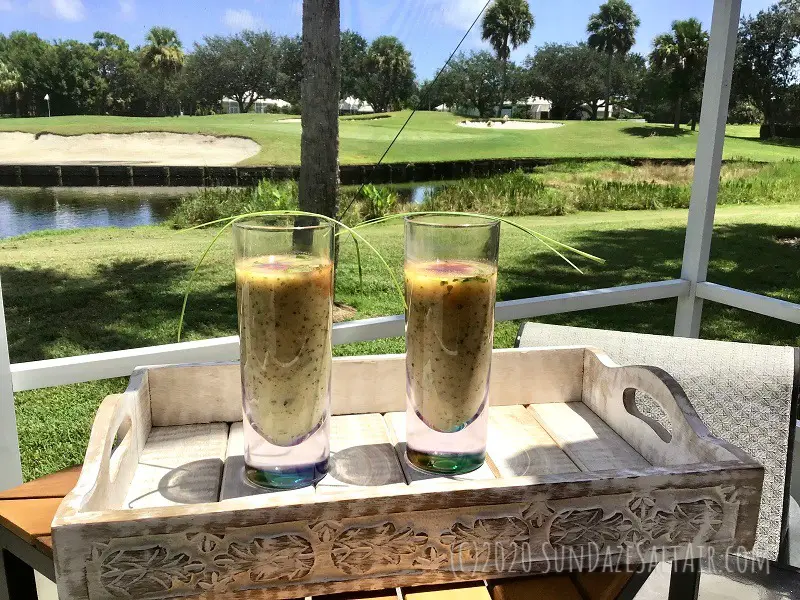
Watercress – The Health Benefits Of This Leafy Green Superfood Plus The Power Of Chlorophyll To Heal The Body – Is There A Connection To Grey Hair & More Youthful Skin? Plus The Tastiest Watercress Recipes

Investigating The Health & Anti-Aging Benefits of Watercress & Chlorophyll.... Can They Help Slow Or Even Reverse Grey Hair? Plus Delicious Watercress Recipes
So I’ve been on something of a greens kick lately - specifically watercress - as I'd been wanting to explore what exactly is so great about these dark leafy greens. And then there it was - freshly stocked in the produce aisle, beckoning, as if to remind me of all the wondrous things I have read about it... Not just a superfood, but perhaps the king of all superfoods... rich in chlorophyll, antioxidants, and on and on. Heeding this suddenly health-conscious voice in my head, I dutifully grabbed a bag of these magical leaves to see if they can possibly live up to all of the superfood hype.
Greens & Chlorophyll
Now, obviously, at first glance watercress is green... very green... on account of its high chlorophyll content. Chlorophyll is probably something most of us associate with the study of plants and photosynthesis in middle school science class, and not something we necessarily think of as being great for our bodies (unless of course, you are a plant) or, for that matter, something we would willingly consume and actually enjoy doing so.
Growing up in New York way back in the '90's, I can't recall anyone I know actually eating watercress, at least not voluntarily, and I only remember it being mentioned in, of all places, an old British novel. There, it was described as a mayonnaise-based sandwich that was apparently served as part of a typical Victorian summer lunch repast favored by genteel British ladies of another time. Interesting insight into a menu in merry olde England, but not particularly relevant to my life or diet in late 20th century New York - or so I thought...

*********
What Is So Special About Dark Leafy Greens Anyway? Chlorophyll And The Interesting Case Of Dr. Ann Wigmore...
Before we look at the possible benefits of watercress specifically, let's take a step back first and examine the category of dark leafy greens in general, to better understand the source and enthusiasm surrounding some of these health benefits.
My curiosity about the health potential of dark leafy greens was initially piqued when I came upon a story somewhere, perhaps in an old Reader's Digest (I can't recall the last time I saw one of those, either) about a fascinating, if somewhat eccentric sounding woman named Dr. Ann Wigmore. Now, Dr. Wigmore had no formal medical training (apparently the Dr. title was courtesy of her friends and how they affectionately referred to her) but through years of her own independent research and inquiry, Dr. Wigmore eventually distinguished herself enough to become a highly knowledgeable, if self-taught, advocate for an alternative, natural, foods-based approach to healing the body from illness from within.
Turning Bad News Of A Cancer Diagnosis Into A Catalyst For Experimentation And Change
"Necessity is the mother of invention" as the saying goes, and Dr. Wigmore's life is a powerful example of this. Apparently, in middle age, after years of bad health habits and a self-proclaimed terrible diet, Dr. Wigmore was confronted with the consequences of her poor lifestyle choices in the form of a host of medical problems, including arthritis, migraine headaches, and most dire of all, a diagnosis of colon cancer.
Following this serious diagnosis, and connecting her illnesses to nutritional deficiencies as a result of her poor diet and lifestyle choices, Dr. Wigmore took it upon herself to develop a regimen to completely overhaul both her diet and lifestyle. Eschewing traditional medical treatments which she viewed as a practice populated with a lot of "quacks" who kept people in a perpetual state of sickness, Dr. Wigmore would base much of her all-natural diet overhaul on knowledge and generational folk wisdom passed down from her grandmother while growing up in war-torn Lithuania.
Dr. Wigmore's knowledge and research ultimately culminated with the development of her "living foods" philosophy and approach to treating her cancer on her terms, which included at its core, among other things, large amounts of a variety of dark leafy greens.
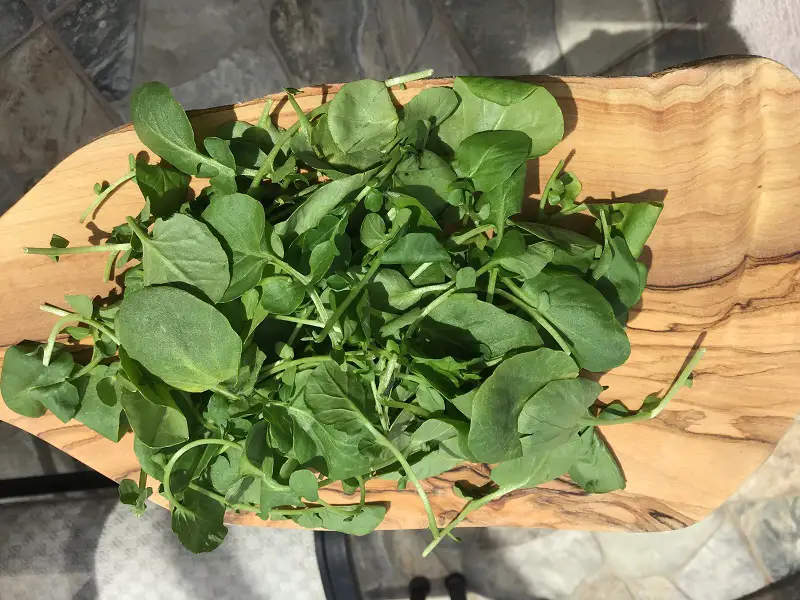
Potential Healing And Rejuvenating Effects Of The Dark Leafy Greens Found In Your Produce Aisle - Can They Help Heal The Body In The Battle Against Cancer?
Putting into practice wisdom acquired from the old country on the nutritional benefits of various produce and whole foods, Dr. Wigmore made a combination of enzyme and vitamin-rich dark leafy greens the cornerstone of her "living foods" nutritional protocol. She also stressed the importance of protein for healing, albeit only certain kinds, as well as fermented foods, but I will save those for future posts. Ultimately, Dr. Wigmore's strict regimen prioritizing nutritional content through strategic food choices, would prove successful.
Even without any concessions to conventional medicine, Dr. Wigmore not only experienced her colon cancer go into remission but, interestingly, she also observed some unexpected side effects in that she felt and looked better than she had in years...
Heal The Body, Reverse Grey Hair?
So, not only did Dr. Wigmore have a victory in the most critical fight, her battle against cancer but, as if that wasn't enough, curiously, all of the white hair that she sported during her unhealthy years leading up to her cancer diagnosis suddenly and inexplicably returned to its original dark color coinciding with her cancer's remission.
It seems logical to draw a connection that the same powers that helped heal her body from cancer also caused her hair pigmentation to return, and from what I have read, Dr. Wigmore gave primary credit for both her remission from cancer and the restoration of her hair pigmentation to the enzyme rich "living foods" she consumed, including the chlorophyll-rich "weeds" and "grasses" of her newly adopted and reformed diet.
Dr. Wigmore continued on this strict regimen, staying cancer free and maintaining excellent health while chronicling what had now become her lifelong pursuit of natural healing through whole foods and chlorophyll-rich greens specifically. While still in excellent health, sadly and somewhat ironically , Dr. Wigmore died unexpectedly at the age of 84 from smoke inhalation when a hot plate she was using to heat up some tea suddenly caught fire in her Boston apartment.
Of course, her teachings and philosophy continue to live on, in one form or another, however, her name has somewhat faded to the passage of time. Since there are still many more questions raised than answers, I hope that by researching and sharing some of her pioneering ideas, that it not only keeps her unique legacy alive, but also provokes more inquiry and research into the healing powers of foods, and inspires others to explore how Dr. Wigmore's "living foods" philosophy can impact their own particular journey to health and healing.
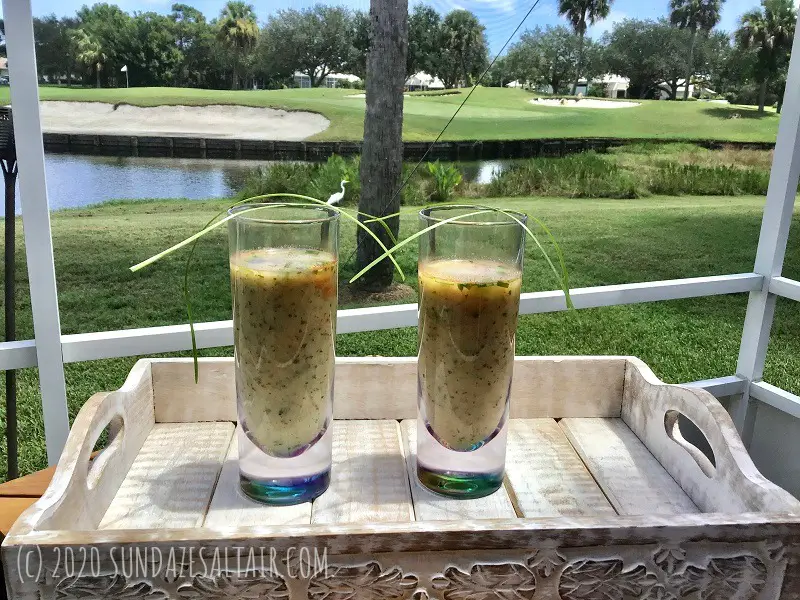
***********
The Role Of Genetics - Is Grey Hair Just An Inevitable Part of Growing Old?
While we have all heard of someone that has experienced a grey hair strand or two suddenly grow in its original color at the root, to have an entire head of hair return to its original color seems to be the stuff of fantasy or snake oil salesmen, not to mention the possibility of curing oneself from cancer without using conventional medical treatments... Too good to be true or is there some science behind it? As a regular person who is not a medical professional but is still very curious about the possibilities and health implications, I decided to take a deeper look in the hopes of learning more.
First, grey hair is definitely influenced by genetics, heredity and age, and that much is clear. Certain genes do control the mechanisms that set in motion changes in your hair pigmentation... but are there other things like lifestyle and diet factors that influence the expression of these genes? From what I have found it does seem that, beyond the effects of genes and years, there appear to be a number of factors that can influence the rate at which one's hair turns grey, some of which may not yet even be fully understood.
Further, there is some evidence that the bleached out hair follicles characteristic of grey hair can often accompany physical or mental weakness, stress or illness of the body - in the alternative arena, Ayurvedic and traditional Chinese medicine have long held this view. In its effort to heal itself, it seems the body naturally and efficiently diverts nutrients and minerals away from lower priority bodily functions like hair growth, pigmentation, and nails, reallocating these precious resources toward the greater priority of survival, maintaining vital functions and defeating anything that threatens it, such as illness and disease.
So Can You Influence Or Even Restore Your Hair Color Naturally By Improving Your Diet And Overall Health? The Importance Of Antioxidants And Enzymes
With our body’s natural aging process and the ongoing daily onslaught of free radicals, whether through bad habits or plain living and breathing, reserves of crucial antioxidants and enzymes inevitably decline. Throughout our lives, these antioxidants and enzymes help neutralize, and therefore, mitigate oxidative stress on the body. Some of these antioxidants and enzymes, specifically one identified as catalase, have been shown to protect and repair hair follicles by effectively managing our body's natural production of hydrogen peroxide - yes, the same stuff that keeps "bottle blondes" blonde, is also made by our bodies as a by-product of many normal daily metabolic processes and immune system responses in the continual effort to keep us healthy and battle against free radicals.
In the course of living, our body uses antioxidants to neutralize and defeat unchecked free radicals, those highly reactive, unstable molecules that gradually damage the cells in your body leading to degenerative disease, illness and aging. In the act of doing this, our body releases natural hydrogen peroxide in the process. When we are young and in good health, our body is able to minimize the harmful effects of hydrogen peroxide by breaking it down into the manageable and harmless elements of hydrogen, oxygen and water.
Unfortunately, as we get older, this conversion isn't always successful as the ability of the the body to successfully accomplish this task of repairing hydrogen peroxide damage diminishes due to lower levels of certain enzymes including catalase and MSR A and B. The result -- you guessed it -- you begin to start noticing suddenly white hairs where richly pigmented strands once grew.
Bottom line, as the body's ability to tackle daily oxidative stress and repair any damage gradually slows down, it gets harder for the body to break down hydrogen peroxide into more harmless elements, allowing this hydrogen peroxide to accumulate inside cells, including inside hair follicles, eventually effectively bleaching our follicles from the inside out.
As Antioxidants Decline So Does The Ability Of The Body To Repair Itself
A depletion or deficiency of protective antioxidants and enzymes is associated with all sorts of age-related degenerative diseases such as cancer, Alzheimer's disease, diabetes, and cardiovascular disease, just to name a few. The least hazardous of these signs of aging is grey hair, but while grey hair may be the least threatening, it is often the most visible sign that there is some breakdown in biological processes and in the body's ability to repair itself, whether to do with simple aging or underlying illness is of course, the eternal $64,000 question... What you can do is to simply "hedge your bets" by being proactive.
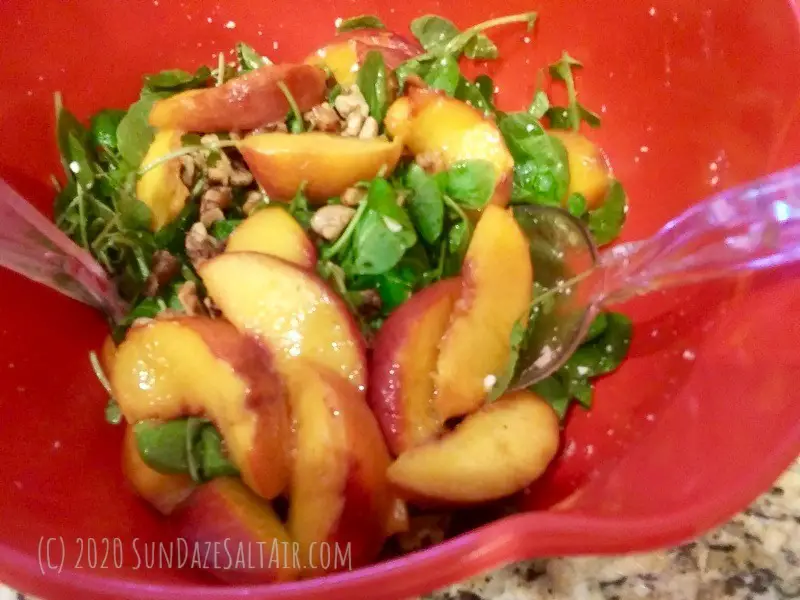
Focus On Restoring Health Holistically To The Whole Body For The Best Chance To See Changes In Appearance Including Hair
Theoretically, if the body is restored to optimal overall health and well-being, your body can then use the additional nutritional resources available to potentially repair and restore deficiencies in your skin, nails and hair, including its pigmentation, to restore them to their optimum condition. To find out how healing our food choices can be, let's take a look at the antioxidant and nutrient-rich superfood watercress, and why exactly you should consider including it in your diet.
**********
Watercress - Praised For Medicinal And Healing Properties Since Ancient Times
One the oldest leafy greens cultivated and consumed by man, healers and wise men and women have sung the praises of the unassuming watercress plant through the centuries. From the ancient Egyptians, Greeks and Romans to modern day holistic practitioners, watercress has been touted as a healer for everything from scurvy and anemia to improving strength and vigor as well as mental focus and acuity. Despite the praise and recent scientific studies that appear to support many of the claims, watercress doesn’t get nearly the attention of its more renowned and spotlight stealing cousins, kale and spinach.
Where Watercress Grows
Watercress, Nasturtium officinale per its Latin botanical name, also known as el berro in Spanish, is certainly aptly named, having a water content of nearly 95%, this edible aquatic plant is most often found in watery locations like streams, springs, and ponds. A hearty, perennial creeper, the watercress plant will even be happy in a boggy area or low drainage section of your garden. So, if you have a swamp in your backyard and are looking to cultivate a leafy green superfood, watercress may be an ideal choice for you. The plant flourishes in summer months, exhibiting small white flowers that resemble the shape of a cross as it grows very fast and vigorously throughout the summer season.

What Does Watercress Taste Like?
Befitting a plant so intensely and highly nutritious, the young shoots and leaves of the plant exhibit an equally intense flavor profile. Unlike milder greens, watercress possesses a strong spicy and peppery flavor that is very similar to the taste of its close relative, arugula. If making a salad for a crowd, you may want to tone down the intensity by combining watercress with milder greens such as butter lettuce, or by including the addition of sweet fruit or creamy, buttery avocado... Or just leave it as is and temper the intensity slightly by using a tangy, acidic dressing that's complementary but tames the heat just enough.
How Many Calories Are In Watecress?
Per cup watercress only contains about 40 calories or less.
Who Can Eat Watercress?
Watercress is suitable for all ages above 6 months. Many leafy green vegetables, spinach in particular, are known to contain high levels of oxalates, an organic substance that occurs naturally in high levels in many common foods such as almonds, chocolate, bananas, and parsley, which can have the effect in high doses of reducing calcium bio-availability and perhaps contributing to kidney stones. However, watercress reportedly has fewer oxalates than the fan-favorite kale, but for more in-depth insight I will happily defer to some experts on this subject...
According to Claire Georgiou, BHSc ND, Reboot Naturopath with rebootwithjoe.com, while research studies confirm the ability of oxalic acid in foods to lower availability of calcium and other minerals, the decrease is relatively small. Not to mention the fact that there is so much more calcium, magnesium and iron in oxalate-rich vegetables like spinach and watercress than the average vegetable in the first place that there will still be plenty of these minerals available to be absorbed.
Also, although varying levels of oxalic acid in vegetables, fruits and other plant-based foods have been reported, it has been shown that growing conditions are a factor that can affect the oxalic acid content of these foods. So overall, it seems the benefits far outweigh the risks for most people, and I encourage anyone interested in reading more on the subject to check out the very informative article, "Oxalates & Kidney Stones – What You Should Know" that I referenced above by Claire Georgiou, BHSc ND.
Why Has This Humble Plant Been Revered In Cultures Around The World? Watercress Is Excellent For Fortifying The Blood & Boosting Circulation
According to Dr. Bernard Jensen, dark green leafy watercress happens to be loaded with chlorophyll, which not only gives the cruciferous plant its signature green color but also plays a role in the unique process of photosynthesis. During this somewhat mysterious transformative process, the plant utilizes its chlorophyll to absorb and then transform the energy of the sun’s rays into a life sustaining food source, glucose, while also transforming carbon dioxide into life-sustaining oxygen. It's so critical to the cycle of life that basically without chlorophyll neither plants nor animals, including humans, could survive.
But What Role Does Chlorophyll Play In Helping Your Blood?
So even though you are not a plant and not doing any photosynthesis anytime soon, chlorophyll-rich greens have many benefits for you. Consuming dark leafy greens delivers high oxygen, iron-rich chlorophyll which acts as an excellent blood detoxifier and purifier, helping to cleanse and build your blood while improving slow or sluggish circulation - a very common issue with age.
Chlorophyll Delivers Iron To The Blood
Containing as much iron as spinach, gram for gram, watercress stimulates the production of red blood cells, also known as hemoglobin, which can then be carried throughout the body, flooding cells, tissues and organs with this oxygen-rich blood, and consequently promoting quicker healing and overall rejuvenation. This can be especially important for anyone with iron-poor blood or anemia, a relatively common condition often experienced by young women.
Watercress & The Ability To Cleanse & Purify The Blood & Its Role In Preventing & Fighting Cancer
Further, according to the American Journal of Clinical Nutrition, recent scientific research has confirmed that consuming watercress regularly reduces genetic damage to blood cells through its ability to purify and detoxify the blood. Cruciferous vegetable consumption in general is associated with a reduced risk of several cancers according to several epidemiological studies. Chlorophyll has been linked to natural cancer prevention by protecting DNA from damage from environmental toxins and stress, stemming from its cleansing and purifying properties which serve to block carcinogenic effects within the body. These clinical findings lend scientific support and credence to the success Dr. Wigmore experienced with her greens-based cancer treatment and her subsequent healing and long-term remission from the disease.
An Increase In Red Blood Cells & Its Effect On Hair, Skin & Nails & Ayurveda & Chinese Medicine
The increase in red blood cells and the ensuing oxygenation effect extends throughout the body, feeding and oxygenating cells in your vital organs, helping your body fight infections, and eventually, impacting less critical areas like skin, hair, and nails. As circulation is increased and iron-rich blood continues to flood cells, deficiencies are corrected, and ultimately, damaged tissue is repaired causing skin cuts and wounds to heal faster and helping skin renew itself and look younger.
Eventually the effects of this healing become apparent even where it takes the longest to see results - your hair and nails. You may notice both become stronger and look healthier, but can this healing even extend to the restoration of pigmentation to greying hair follicles?
The anecdotal cases such as Dr. Wigmore's seem to indicate that yes, it may be possible. But, as with anything, results are as varied as the individual, and there is a wide spectrum of how the healing can be manifested in each body, with the most apparent results occurring in those individuals where a real deficiency existed in the first place. After all, according to Ayurveda and traditional Chinese medicine, grey hair is associated with the quality of our blood as well as kidney function and the appearance of grey hair indicates a weakness or deficiency in both.
It would be interesting to hear if any of those who experienced such changes were also able to corroborate or document their results with before and after nutritional blood work confirming the initial vitamin or mineral deficiencies and then any subsequent improvements. There are blood tests on the market that can provide your nutritional profile, detecting and revealing your unique nutritional deficits so that you can then tailor your diet and nutritional program accordingly. As these tests become more readily available, more precise, and more popular, it should help individuals better track changes and gather insight into their evolving nutritional needs.
Antioxidants and Sulfur - A Potent Combination For Maintaining Youthful Skin And Hair
Along with chlorophyll, as a true superfood, watercress is loaded with a number of powerful antioxidants. Containing more beta carotene than tomatoes, more Vitamin C than oranges, and more Vitamin E than broccoli, as well as large amounts of polyphenols or micronutrients, watercress is basically an antioxidant superstar. Like other potent antioxidant-filled leafy greens such as parsley, arugula and mustard greens, the antioxidants in watercress are able to scour and neutralize skin and body damaging free radicals helping your skin to look smooth, taut and youthful despite the passing years.
One study found that women who ate a large serving of watercress daily for four weeks saw an improvement in the condition of their skin, including a lessening of brown spots and redness. In addition, watercress also happens to contain the valuable and relatively rare mineral sulfur, a nutrient known for its ability to support and strengthen skin collagen, as well as promote strong and healthy hair growth by aiding in vital protein absorption and cell-building processes, as well as blood purification.
Aside from the obvious external benefits, getting so many antioxidants working together synergistically in the one powerful package that is watercress helps to maintain the strength and integrity of many parts of the body, not just skin, hair and nails.
Watercress And Diabetes Prevention
As watercress potentially slows down aging of your skin from the inside out where it counts, watercress is also making your whole body healthier all around using its antioxidants to reverse damage throughout the body including the damage that triggers diabetes.
Tossing some watercress in your next salad or side dish could help lower your risk of type 2 diabetes, reportedly by 14 percent. Like other dark leafy greens, including the overlooked, underrated parsley, according to scientists from the diabetes research team at the University of Leicester in the UK, the antioxidants in watercress have the potential to lower your blood sugar glucose levels and keep them in the healthy zone, while watercress’s magnesium content also contributes to helping your body process blood glucose in a healthy way.
In addition, and rather surprisingly, watercress contains small amounts of good fats, including a relatively high proportion of the important essential fatty acid alpha-linolenic acid, part of the omega-3 fatty acid family, helping your cell walls to be more responsive to the blood glucose-controlling hormone insulin. Even with this small amount of fat, per cup watercress still only contains about 40 calories or less.
Watercress To Support Vision, Eye Health & Heart Health & Blood Pressure
Containing phytonutrients and carotenoids including vision supporting lutein and zeaxanthin, watercress helps protect eye health and vision using these phytonutrients to protect and preserve your retinas from the ravages of age. Low levels of beta-carotene, lutein and zeaxanthin also happen to be associated with heart disease and high blood pressure -- perhaps it's no coincidence that the eyesight tends to go in mid-life often around the same time many people begin to experience the onset of cardiovascular disease and high blood pressure. Studies have shown that high levels of carotenoids can not only protect against heart disease, but may also reduce your risk of suffering both heart attacks and strokes.
Mineral-Rich Watercress - Supplying Vital Trace Minerals Plus Vitamin K To Combat Age-Related Bone Loss, Tooth Decay & Cardiovascular Problems As Well As Helping Aid Proper Cellular Fluid Balance
Watercress also happens to be rich in vital minerals, contributing a generous supply including, gram for gram, as much calcium as whole milk, as well as magnesium, potassium and phosphorous, all essential for bone health. By regularly consuming watercress, you may boost your internal mineral supply and reap all the benefits, including increased bone building, strength and density, as well as improving tooth strength and health, especially important as we age and experience age-related mineral and bone depletion, as well as increased dental problems. After all, as someone somewhere once said, your teeth really are just a visible display of your skeleton... so anything that benefits your bones will also benefit your teeth and oral health as well.
These trace minerals in watercress are also critical for regenerating skins cells, promoting strong healthy hair and nail growth, and magnesium, in particular, is vital for the functioning of every cell in your body, but is especially important for keeping your heart healthy. In addition, watercress possesses the important electrolyte potassium, another mineral found inside body cells, which helps maintain proper fluid balance since potassium is a natural diuretic. Potassium is also critical for proper muscle contraction, regulating heartbeat, nerve conduction, as well as maintaining the correct acid/alkaline balance in your body.
In addition to a treasure trove of minerals, watercress is rich in critical bone-building vitamin K, yet one more reason consuming watercress regularly supports your bone health and can mitigate the increasing risk of fracture and osteoporosis for women after a certain age. As the fat-soluble vitamin best known for its help in blood clotting and bone formation and regeneration, vitamin K is a vital nutrient so any deficiencies that do occur can be dangerous in terms of bone health as well as potentially interfering with blood clotting, which can make even commonplace things like nosebleeds more dangerous. And because vitamin K is also manufactured by beneficial bowel bacteria, the body's vitamin K supply can very easily be disrupted by aggressive use of antibiotics which destroy the bacteria that contribute to vitamin K creation.
With antibiotic use all too common in traditional modern medicine, a vitamin K deficiency is a real possibility. And while the risk of toxicity of natural vitamin K is unlikely, manufactured vitamin K can be toxic in high amounts, making natural food such as watercress, once again, the best, most recommended source for this essential vitamin for our bodies.
Watercress Helps Facilitate Digestion With Enzymes
The chlorophyll in watercress also contains an abundance of enzymes which aid in breaking down the meals you consume thereby facilitating smoother digestion and enabling your body to better absorb the vitamins and minerals from your food.
Watercress Aids Your Body's Natural Detoxification Process
Our body naturally protects itself from the daily onslaught of toxins we are exposed to in our environment, whether food, chemical-filled products, alcohol, the air we breathe, and so on. However, as our organs constantly work to purge themselves of toxins through elimination via the digestive system, skin, lungs, kidneys and liver, it is helpful to support our body in it's continuous efforts to detoxify, defeat and remove these threats. Once again, the mighty green watercress has the goods that can help save the day...
Important, if virtually unpronounceable, compounds known as Phenethylisothiocyanate (PEITC to you and me) found in watercress assist our bodies with the detoxification process by converting fat soluble toxins stored throughout the body into water-soluble ones - which can then be more easily eliminated from the body through sweat and urination. Of course, anything that encourages detoxification and facilitates the purging of toxins also has fantastic long-term benefits for the skin.
Watercress - A Food That Offers Holistic Healing For The Whole Body & Putting Dr. Wigmore's "Living Foods" Philosophy For Whole Body Healing Into Practice
Now, hopefully you have gathered from everything you have just read that the multitude of health benefits associated with dark leafy greens and watercress run way deeper than skin or hair deep. But as superficial as skin and hair may be, they are often the first barometer that some biological processes are beginning to slow or break down. Unlike with most intrinsic signs of impending age, including illnesses like cancer and cardiovascular disease, which are initially invisible to the naked eye, aging clues in skin and hair pigmentation are usually readily apparent and the first reminder that time stops for no one.
While we can't see a depletion or deficiency of protective antioxidants and enzymes and usually don't have any indication something's wrong until the onset of age-related degenerative diseases such as cancer, Alzheimer's, diabetes, or cardiovascular disease, we can hopefully use what we see on the surface in the mirror as motivation to overcome bad habits and start living a healthier lifestyle overall.
If appealing to one's vanity is what it takes to get someone to be more proactive and eat more antioxidant and nutrient-rich superfoods like dark leafy greens such as watercress- then so be it! By focusing on restoring optimal health holistically to your whole body, you will have the best chance at seeing improvements in appearance, including in your skin, nails and hair.
As someone who is not a trained medical specialist, but who simply enjoys researching and advocating for anything that can optimize health while minimizing expensive trips to the doctor's office -- Dr. Ann Wigmore's teachings and her "food as a healer" philosophy certainly inspire me to be more conscious of making healthier, more "living" food choices.
While her nutritional epiphany and the changes she implemented were a direct result of her dire cancer diagnosis, it shouldn't take drastic news to incorporate some of Dr. Wigmore's healing practices gradually into your diet and lifestyle. And while her results in defeating cancer, regaining her health and even regaining her hair pigmentation, were dramatic, it's the small internal changes you don't see that, over the long-term, will help you to live a healthier, better quality, more productive, and maybe even a longer life.
**********
And Now For Some Delicious Watercress Recipes
Here are some easy, yet delicious recipes to get the benefits of watercress without sacrificing flavor or making you feel like you have suddenly adopted the taste palette of a rabbit...
Sauteed Peach, Watercress And Walnut Salad
The combination of sweet and savory with spicy and peppery offers a great hot and cold contrast of flavors in this quintessential summery salad...

Ingredients Serves 4
3 large ripe peaches
4 ounces watercress (or mix 2 ounces arugula or a milder leafy green with 2 ounces watercress)
Juice of half of a large lemon
2 tablespoons olive oil
Walnuts (a handful)
Feta Cheese or Ricotta Salata
Salt and freshly ground pepper to taste
Cut the peaches into quarters, discarding the pits.
Wash the watercress and any other greens you are using, then spin or pat dry with a dish towel and set aside in a bowl. Dress the greens by pouring over the juice from half a large lemon, and stir to coat the greens evenly. Let sit for a few minutes, and then follow up with a tablespoon of olive oil, and again, toss greens to combine.
Pour 1 tablespoon of olive oil into a saute pan and heat on low. Once warmed, add the peaches to the pan, stirring occasionally to coat peaches evenly with olive oil and get a good sauté going. Continue to sauté while stirring for about ten minutes until the peaches soften throughout. The sugars in the peaches will start to slightly caramelize and become tender and soft. Remove from heat and spoon peaches, including all drippings, over salad greens. Toss to blend all flavors together.
The walnuts will need your undivided attention as walnuts burn quickly and you do not wanted any charred or blackened and bitter walnut flavor in your salad. In a 325 degree oven or toaster oven, place the walnuts on a pan and bake until they turn slightly golden, which should take no longer than between 3 to 5 minutes, depending on how hot your oven was to start. Again, you will want to be vigilant as the nuts brown very fast, so as soon as you smell roasting walnuts, be sure to remove them from the oven or they will continue to cook and brown even once your oven is off.
Add walnuts in with peaches and greens, then add the cheese, salt and pepper, and toss to combine all flavors. Serve immediately while peaches are still warm.
Watercress And Zucchini Soup With Smoked Paprika And Chives
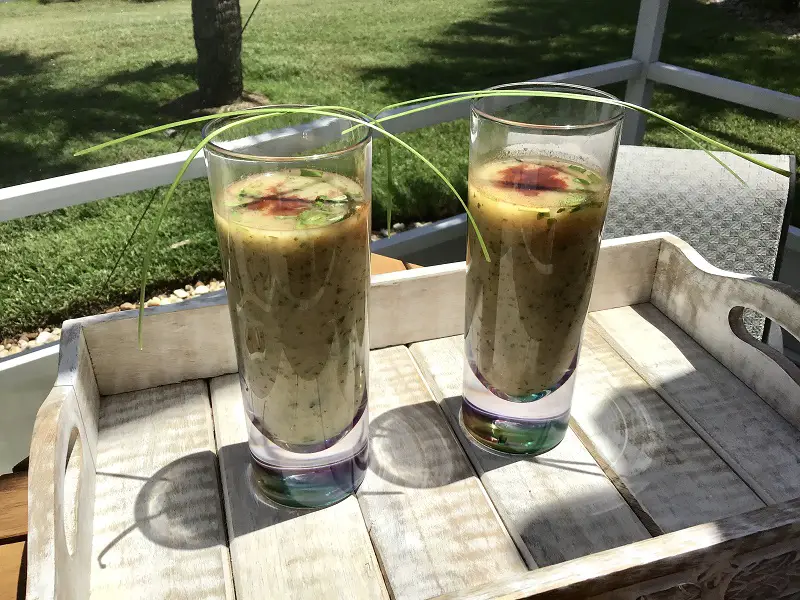
Ingredients Serves 4
2 tablespoons olive oil and 1 Tablespoon butter
1 onion
3 zucchinis
4 oz. watercress
2 cups chicken or vegetable stock
3/4 cup buttermilk
2 teaspoons sea salt
pepper to taste
1 tablespoon plus more smoked paprika for garnish
5 chives, chopped, plus strands for garnish if desired
Wash and peel the zucchinis and slice them into rounds or small cubes. Finely dice the onion. Heat olive oil and butter in a large saucepan over low heat and saute the onion, adding the zucchini and stirring gently until both are softened and translucent, about 5 - 10 minutes. Do not allow them to brown.
Add chicken or vegetable stock and bring to a boil. Lower heat, add three-quarters of watercress and simmer for about 10 minutes. Add remaining watercress and cook about 2-3 minutes, just until wilted. Take the saucepan off the heat and allow to cool for a few minutes.
Use a blender, food processor, or a hand-held stick blender to puree the soup. Return soup to the pan and add buttermilk and heat gently, not allowing it to boil.
Stir in salt and smoked paprika, and serve sprinkled with more smoked paprika garnished on top as well as chopped chives. The soup can also be served chilled if desired.
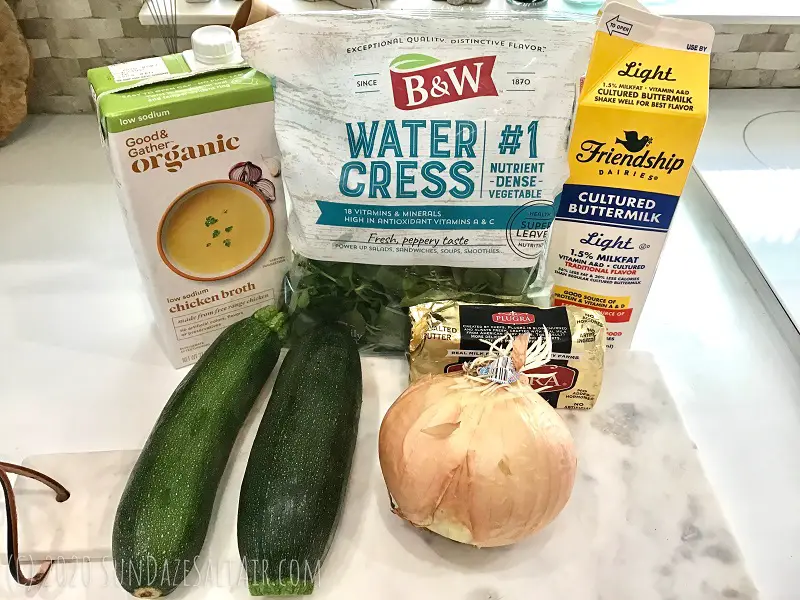
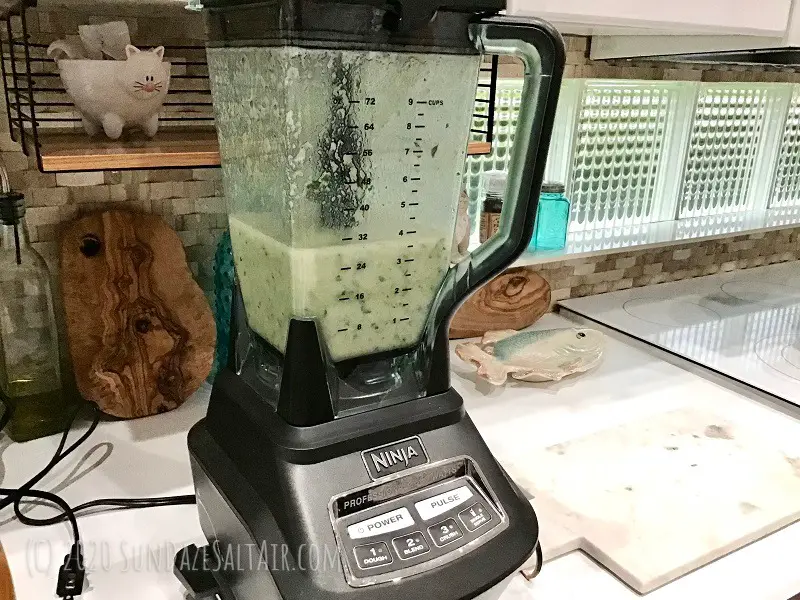



You May Also Like

No-Bake Lemon Ricotta Icebox Pie In A Pretzel Crust – The Perfect No-Bake, Delicious Summer Dessert For Your Next Backyard Party
May 18, 2021
Easy Homemade Ginger Ale Sweetened Naturally – How To Make It & Why You Should
March 14, 2021